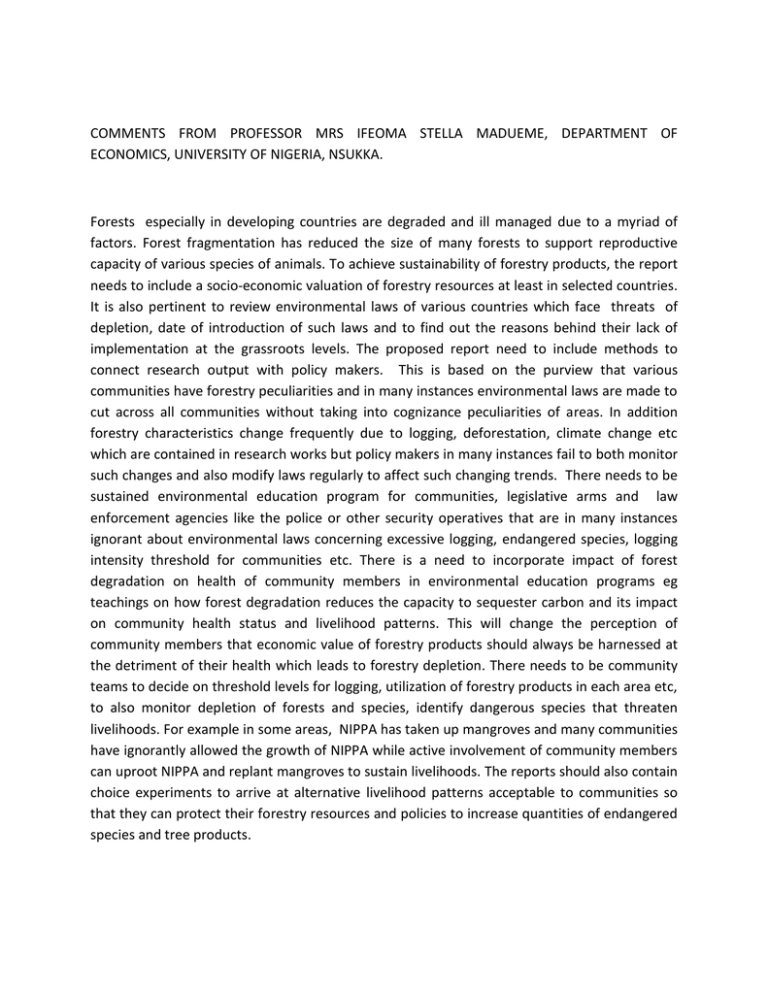COMMENTS FROM PROFESSOR MRS IFEOMA ... ECONOMICS, UNIVERSITY OF NIGERIA, NSUKKA.
advertisement

COMMENTS FROM PROFESSOR MRS IFEOMA STELLA MADUEME, DEPARTMENT OF ECONOMICS, UNIVERSITY OF NIGERIA, NSUKKA. Forests especially in developing countries are degraded and ill managed due to a myriad of factors. Forest fragmentation has reduced the size of many forests to support reproductive capacity of various species of animals. To achieve sustainability of forestry products, the report needs to include a socio-economic valuation of forestry resources at least in selected countries. It is also pertinent to review environmental laws of various countries which face threats of depletion, date of introduction of such laws and to find out the reasons behind their lack of implementation at the grassroots levels. The proposed report need to include methods to connect research output with policy makers. This is based on the purview that various communities have forestry peculiarities and in many instances environmental laws are made to cut across all communities without taking into cognizance peculiarities of areas. In addition forestry characteristics change frequently due to logging, deforestation, climate change etc which are contained in research works but policy makers in many instances fail to both monitor such changes and also modify laws regularly to affect such changing trends. There needs to be sustained environmental education program for communities, legislative arms and law enforcement agencies like the police or other security operatives that are in many instances ignorant about environmental laws concerning excessive logging, endangered species, logging intensity threshold for communities etc. There is a need to incorporate impact of forest degradation on health of community members in environmental education programs eg teachings on how forest degradation reduces the capacity to sequester carbon and its impact on community health status and livelihood patterns. This will change the perception of community members that economic value of forestry products should always be harnessed at the detriment of their health which leads to forestry depletion. There needs to be community teams to decide on threshold levels for logging, utilization of forestry products in each area etc, to also monitor depletion of forests and species, identify dangerous species that threaten livelihoods. For example in some areas, NIPPA has taken up mangroves and many communities have ignorantly allowed the growth of NIPPA while active involvement of community members can uproot NIPPA and replant mangroves to sustain livelihoods. The reports should also contain choice experiments to arrive at alternative livelihood patterns acceptable to communities so that they can protect their forestry resources and policies to increase quantities of endangered species and tree products.



